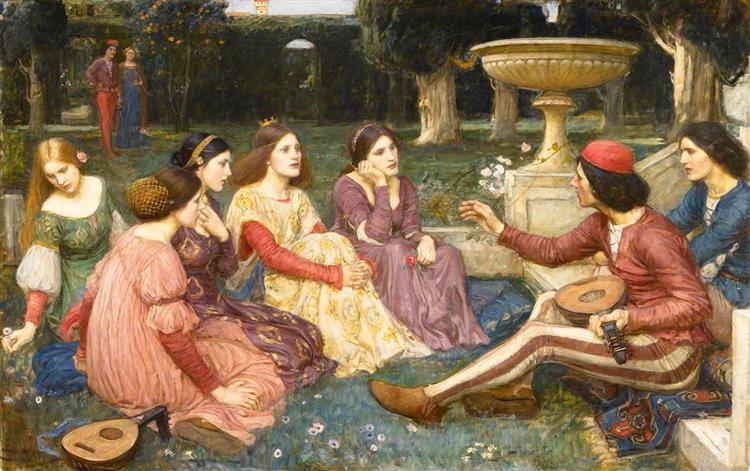John William Waterhouse was an English painter during the Victorian era. He was born in 1849 in Rome, Italy. He is most well known for his large paintings of mythological themes and literary subjects.
Waterhouse was born in Rome where his father was working as a painter. Shortly after his birth, his family moved back to England, where Waterhouse began helping his father in his studio when he was old enough.
In 1870 Waterhouse enrolled at the Royal Academy in London to study sculpture. It didn’t take long, however, for Waterhouse to turn to paint. He exhibited his first painting at the Royal Academy in 1874.
This was the beginning of a long relationship between Waterhouse and the Royal Academy, where he exhibited regularly. In honor of this relationship, he was made an associate member in 1885 and a Royal Academician in 1895.
From the very beginning, Waterhouse was consistent with both his style of painting and his subject matter. He painted mythological scenes from history, classic stories, or literature. These scenes often had a female protagonist in the midst of a particular scene from the story or legend.
His obsession with literary and mythological subject matter suggests connections with the Pre-Raphaelite Brotherhood, a group that was formed in reaction to the historical paintings being made at the Royal Academy at the time.
His painting style followed that of the Impressionists in the way that he allowed brushstrokes to add a sketch-like quality to his final pieces.
It was this consistency in his work that eventually led to his fall from fame. His subject matter and the style in which he painted it fell out of favor near the end of the 20th century but enjoyed a resurgence in popularity long after the artist’s death.
Despite a long and debilitating battle with cancer, Waterhouse continued to paint until his death in 1917.
1. The Slave
‘The Slave’ was created in 1872 by John William Waterhouse in Romanticism style.
2. Undine
‘Undine’ was produced in the year 1872 by John William Waterhouse in Romanticism style.
3. Gone, But Not Forgotten
‘Gone, But Not Forgotten’ was made by John William Waterhouse in the year 1873 in Romanticism style.
4. Miranda
‘Miranda’ was produced in the year 1875 by John William Waterhouse in Romanticism style.
5. In The Peristyle
‘In The Peristyle’ was made in the year 1874 in Romanticism style by John William Waterhouse.
6. Sleep And His Half Brother Death
‘Sleep and His Half-Brother Death’ is a painting by John William Waterhouse completed in 1874 in Romanticism style.
7. The Spinner
‘Spinner’ is one of the artworks by John William Waterhouse in the year 1874 in Romanticism style.
8. After The Dance
‘After the Dance’ was created in 1876 by John William Waterhouse in Romanticism style.
9. It’s Sweet Doing Nothing
‘It’s sweet doing nothing’ was created in 1880 by John William Waterhouse in Romanticism style.
10. The Household Gods
‘The Household Gods’ was created in 1880 by John William Waterhouse in Romanticism style.


